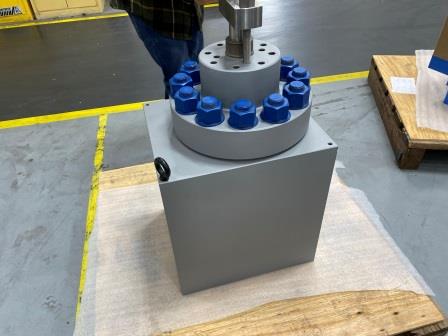SSPC-SP 1 Solvent Cleaning
SSPC-SP 1 solvent cleaning is a specification that the Society for Protective Coatings (SSPC) has placed in order to prevent premature coating failure. This specification is a way to approach surface preparation, which promotes longer coating life on industrial equipment. SSPC-SP1 is a requirement for surface preparation that removes contaminants from steel surfaces. Solvent cleaning is the primary method to remove visible dirt, grease, oil, soil, drawing compounds, as well as, similar organic compounds from steel surfaces.
The I4I Academy API source inspection fixed equipment course covers SSPC-SP-1 and other related painting and coating inspections. In parallel, the API 571 Corrosion and Material course delves into the damages resulting from coating and painting in refineries and petrochemical plants. Furthermore, the API 570 Piping Inspector course dedicates a session to the inspection of piping external corrosion, Similarly, API 510 Pressure Vessel Inspection course includes a section addressing pressure vessel external corrosion. The API 653 Above-Ground Storage Tank Inspector course features a session specifically focusing on external corrosion attributed to painting and coating failure.
Why is Solvent Cleaning Important?
SSPC-SP1 is an essential requirement because it is done before surface preparations such as SSPC-SP 10/NACE No. 2 near-white blast cleaning or SSPC-SP 5/NACE No. 1 white metal blast cleaning. Surface preparation is the removal of rust, scale, or paint off steel surfaces.

The process of solvent cleaning entails, solvents of various kinds being used separately or combined to remove the contaminants listed above i.e. grease, oil, soluble salt, etc. Solvents can be directly applied onto the surface, used on scrubbing brushes or rags, or surfaces being immersed in the solvent.
The best way to avoid spreading the contaminants is to use contaminant free solvents for the final steps. The SSPC 1 solvent cleaning sometimes is a contingency plan on coating specification. Some customer requires a chloride test to be performed and if the chloride level was more than 15μg/cm², then is subjected to the solvent cleaning otherwise can be directly subjected to the sand blasting.
What Solvents can be used for SSPC-SP 1 Solvent Cleaning?
SSPC-SP 1 solvent cleaning calls for the use of solvents for cleaning. Solvent cleaning can be done using organic, inorganic, petroleum based, alkaline cleaners, acidic cleaners, and detergents. The solvents for SSPC-SP 1 solvent cleaning should be selected carefully based on the surface material and contaminants that need to be removed from the surface. It is highly recommended that precaution be taken when selecting your solvent. The determination of solvents used for SSPC-SP 1 can be based on environmental temperatures or suggested based on the environment that SSPC-SP 1 will be performed in.
Regardless of which solvent is used caution is always advised. As some solvents are hazardous, safety precautions should be taken when using solvents for SSPC-SP 1. A list of some solvents has been provided below.
Alkaline solvents
- Sodium Hydroxide
- Sodium Carbonate
- Sodium Silicate
- Orthosodium Silicate
- Sodium Phosphate
- Trisodium Phosphate
Detergents
- Household detergents
Petroleum solvents and Turpentine
- Acetone
- Benzene
- Carbon Tetrachloride
- Cyclohexane
- Epichlorohydrin
- Ethyl Acetate
- Ethanol
- Ethylene Dichloride
- Ethylenediamine
- Furfuryl Alcohol
- Methanol
Petroleum solvents and Turpentine cont.
- Methylene Chloride
- VM & P Naphtha
- Perchloroethylene
- Isopropyl Alcohol
- Stoddard Solvent
- Toluene
- Trichloroethylene
- Turpentine
- Xylene
Emulsion
Cleaners normally consist of oil-soluble soaps or other agents that contain kerosene or mineral spirits. Take note some solvents can be combined, and all solvents should be used under special care due to their hazardous nature.
Procedure
In order to successfully follow SSPC-SP 1, you have to take steps prior and post this requirement to complete the specification of solvent cleaning.
Prior to performing solvent cleaning, it is best if dust is removed from the surface of interest. The removal of dust prior to applying SSPC-SP 1 solvent cleaning is done by using a stiff wire brush against the surface. If necessary, applying solvents appropriate for removing dust is acceptable as long as it is rinsed off with fresh water prior to solvent cleaning.
Remove all contaminants from the surface with a scraper and then apply any of the methods listed below:
- Use a rag or brush with solvent to wipe or scrub off the remaining contaminants
- Spray surface with solvent
- Fully immerse surface into solvent
- Use emulsion or alkaline cleaners
- Use detergents or cleaners to steam clean
Take caution on all methods listed to remove the final contaminants. Be sure to use clean rags, brushes, solvent spray, and solvents for the final steps for each method used. For emulsion, alkaline cleaners, and steam be sure to finish the method by cleaning the surface with fresh water or steam.
Just as important as pre-solvent cleaning, post-solvent cleaning is just as important as the step following solvent cleaning.
Post solvent cleaning, it is very important to remove all remaining residue on the surface. This is best done by using any of the accepted methods listed.
- Blow off with clean dry air
- Brush off
- Vacuum cleaning
What is next?
With the completion of SSPC-SP 1 solvent cleaning, any surface preparation method can be performed depending on the project specification i.e. SSPC 10 or SSPC 5.
Free newsletter!
Sign up to receive my monthly newsletter covering all the latest courses and updates.




New! Comments
Have your say about what you just read! Leave me a comment in the box below.